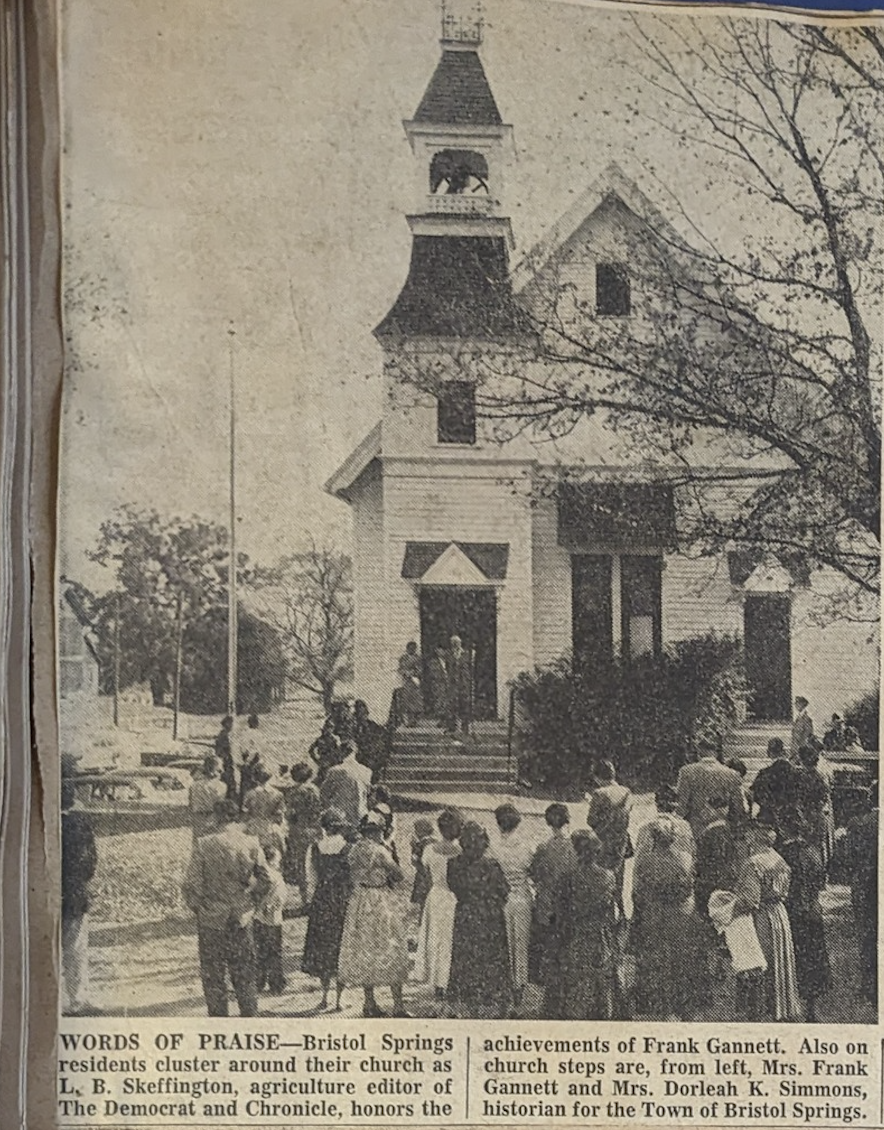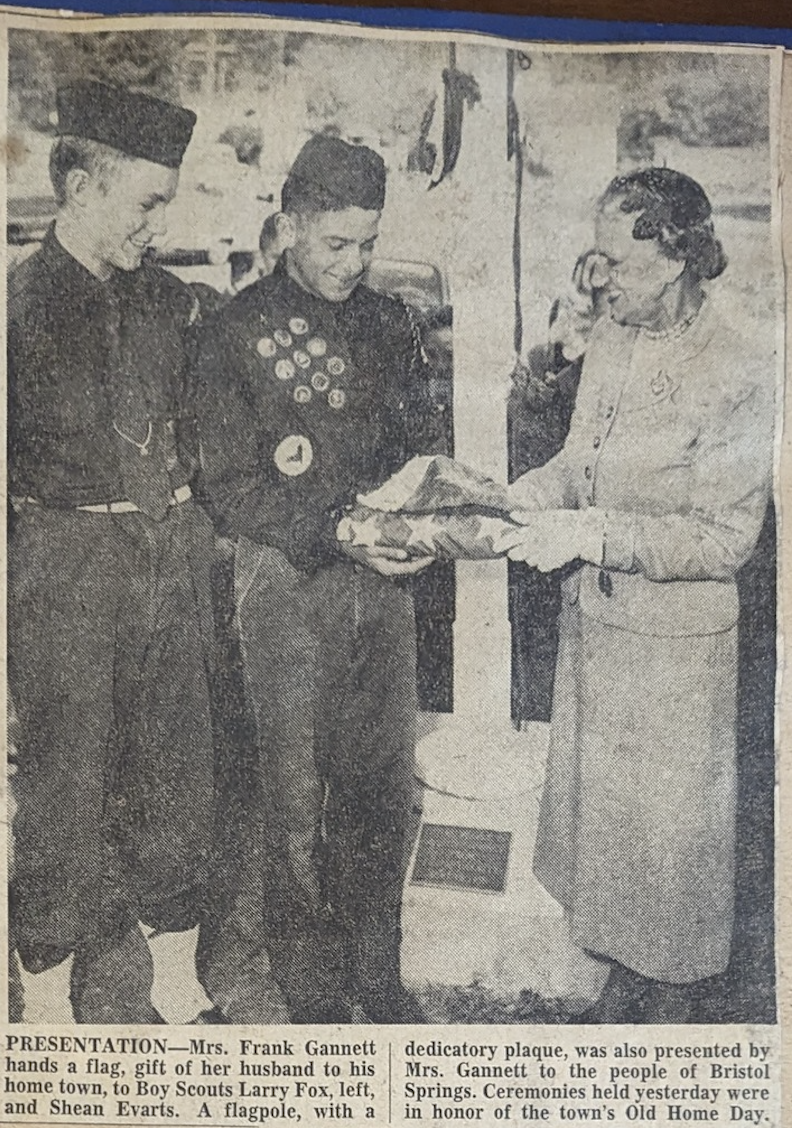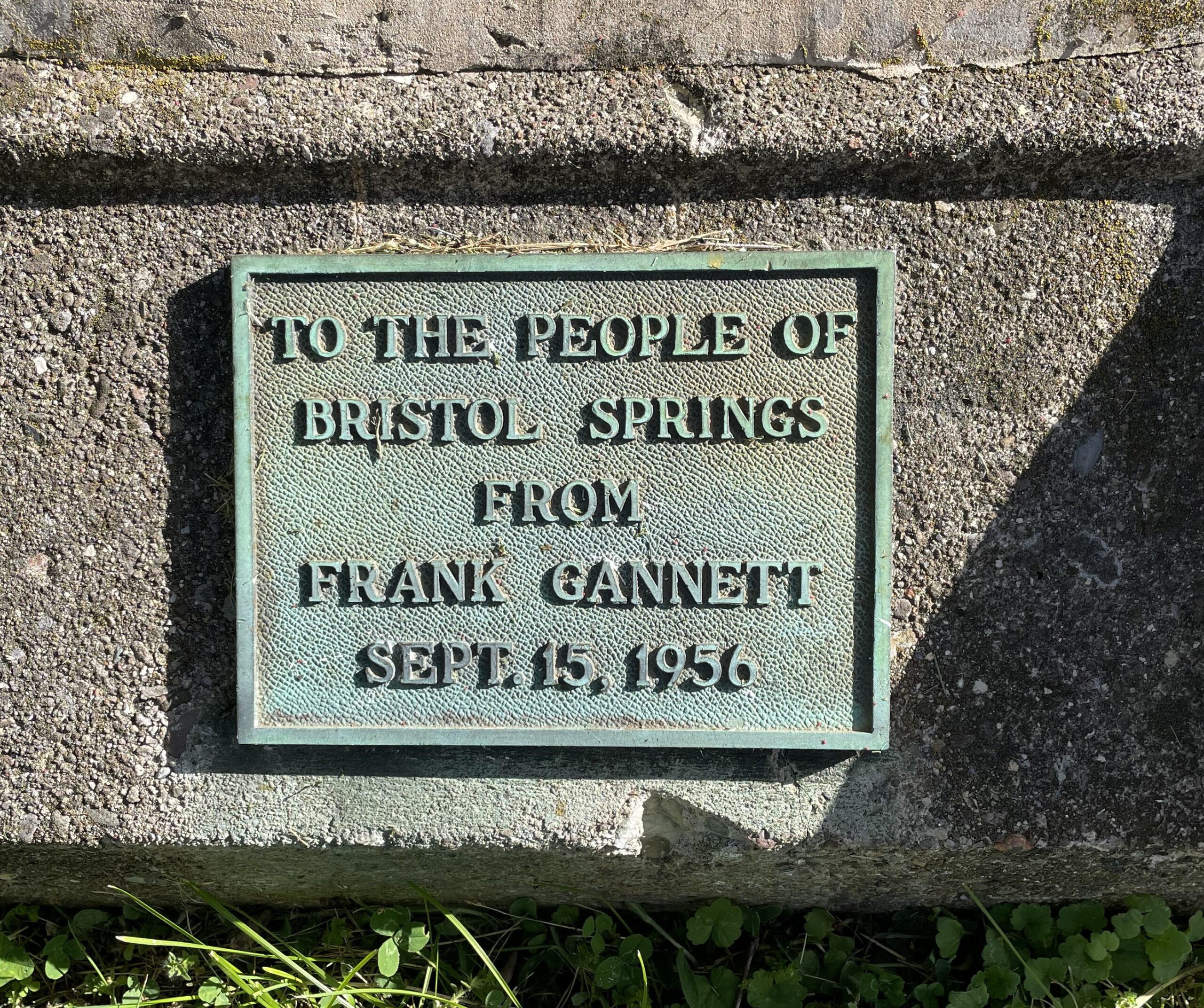


Here are a couple of newspaper clippings from the Naples Historical Society — recently shared on social media by Tracy Gossoo.
From what I can gather, these photos were taken in 1956 on the day they dedicated the flagpole that’s planted near the former main entrance to the church off “The High Road.”
If you have read the plaque on the base of the flagpole, you may have wondered (or forgotten) who Frank Gannett was. What were his achievements that were being honored? Why did he gift the flagpole to “The People of South Bristol”?
His story is quite interesting. You can find a lot more on Wikipedia, and elsewhere on the Internet, but here’s the Cliff’s Notes version (With help from ChatGPT):
Frank Gannett was a visionary newspaper publisher who played a significant role in shaping the media landscape of the United States in the 20th century. Known for his innovation and commitment to community journalism, Gannett’s legacy continues to influence the industry today.
Frank Ernest Gannett was born on September 15, 1876, in South Bristol, New York. One of his first jobs was delivering papers for the Rochester Democrat & Chronicle. He began his career in journalism as a reporter for the Elmira Gazette. His dedication and talent quickly propelled him into various roles in newspaper management.
In 1906, Gannett became the owner of the Elmira Star-Gazette, but his ambitions went far beyond a single publication. He envisioned a network of community newspapers that would serve the needs and interests of readers across the nation. Over the years, as his newspaper empire expanded, he established the Gannett Company, which would later become Gannett Co., Inc.
Frank Gannett’s vision for his newspapers was clear: to provide local communities with news and information that was relevant and beneficial to their lives. He believed in the power of local journalism to strengthen democracy and foster a sense of community. His commitment to community journalism made his newspapers essential in the towns and cities they served.
Under his leadership, the Gannett Company introduced several groundbreaking concepts, such as a “news wheel” format, which categorized news stories to make it easier for readers to find the information they sought. He also embraced technology, using radio and television to complement the newspapers and expand the company’s reach.
Like his arch rival, William Randolph Hearst, Gannett also had an interest in politics, with a brief run for the Republican nomination for president in 1940.
In 1948, he suffered a stroke. In 1955 in fractured his spine and was forced to set aside his management duties. He died on December 3, 1957. He was 81.
According to Wikipedia: Gannett started off with virtually nothing and built an empire that continues on to this day. His obituary in Time magazine read that “Gannett, 81, was publisher-founder of an empire that includes 22 newspapers, four radio and three TV stations.”[ He is buried in historic Mt. Hope Cemetery in Rochester, New York.
In 2019, Gannett merged with GateHouse Media, creating the largest newspaper publisher in the country. The company has 92 daily newspapers in circulation including USA Today, the nation’s No. 1 newspaper. All because of a visionary youth from South Bristol, who probably (I’m guessing) attended BSFC on numerous occasions.
And there you have… The rest of the story — Bob Lindquist.
– For more go to: https://en.wikipedia.org/wiki/Frank_Gannett
